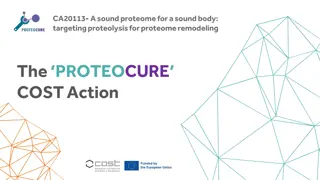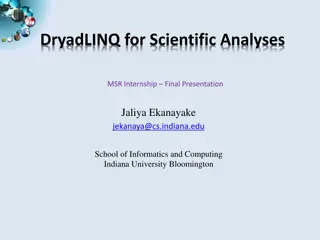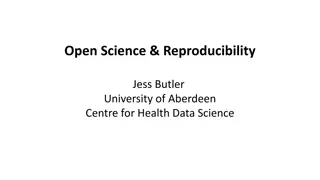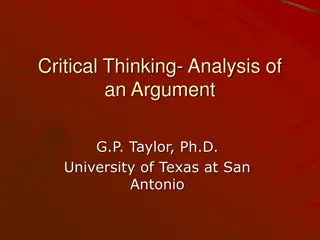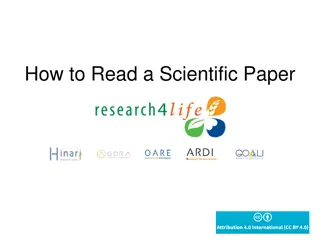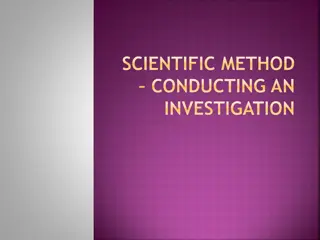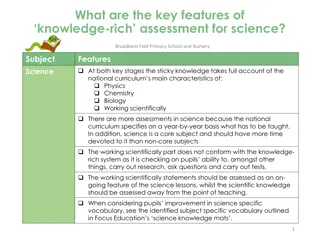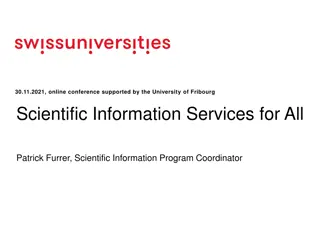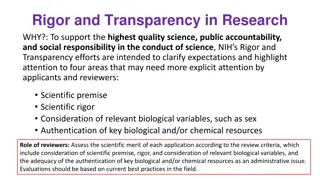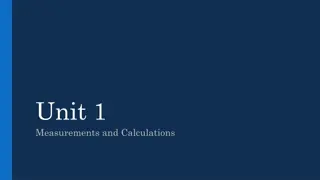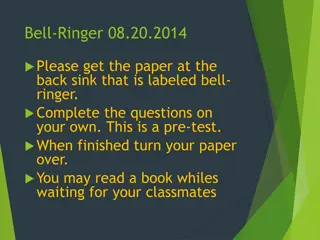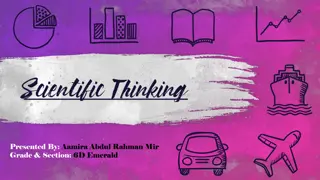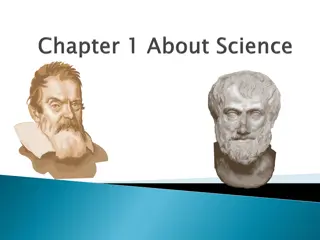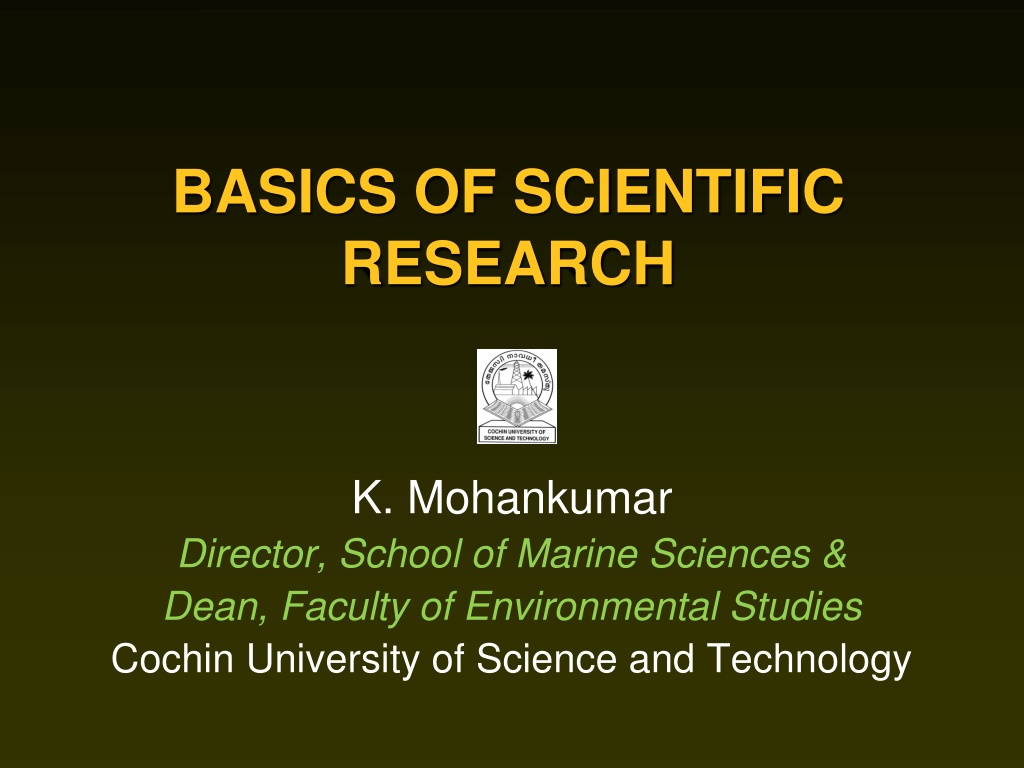
Effective Research Strategies for Academic Success
Learn the step-by-step process of developing a good research question, choosing relevant topics, selecting quality research papers, and analyzing research results. Helpful tips provided by K. Mohankumar, Director at Cochin University of Science and Technology.
Download Presentation

Please find below an Image/Link to download the presentation.
The content on the website is provided AS IS for your information and personal use only. It may not be sold, licensed, or shared on other websites without obtaining consent from the author. If you encounter any issues during the download, it is possible that the publisher has removed the file from their server.
You are allowed to download the files provided on this website for personal or commercial use, subject to the condition that they are used lawfully. All files are the property of their respective owners.
The content on the website is provided AS IS for your information and personal use only. It may not be sold, licensed, or shared on other websites without obtaining consent from the author.
E N D
Presentation Transcript
BASICS OF SCIENTIFIC RESEARCH K. Mohankumar Director, School of Marine Sciences & Dean, Faculty of Environmental Studies Cochin University of Science and Technology
How do you come up with a good research question? Research is a process. It begins with your question, and ends with your answer. Analyze the assignment Develop your research question
How to Start Research? Pick a relevant topic or area of interest based on your background in the Subject. Try to be as specific as possible Do not pick too General Compile a set of 'keywords' to start searching for high quality readings for each of the previously selected topics. Pick one research topic at a time Search on the web Double check the publication details for quality
Select around 15-20 papers that you think are most related to what you had in mind For the selected 15-20 papers read only the abstract, introduction and conclusion in detail Identify the emphasis of each paper: which problem it addresses? what solution it proposes? how the solution differs from previous solutions ? what are the main contributions and conclusions ?
Out of these 15-20 papers, and based on your reading and understanding: Pick a list of 4-6 papers that you think are the highest quality Address your research interests Challenges in the field most appropriately.
Read those 4-6 papers from beginning to end, identifying in detail: The main approaches/ Topic of Relevance Methods of analysis: (i) approach, (ii) evaluation tools, (iii) simulation or measured data Analysis and interpretation of results How the results are justified in the Discussion Conclusions Drawn
Some questions to ask include: Did all/some papers use similar approaches? Have they used the same evaluation criteria, or method of analysis? If not, then what are the strengths/ weaknesses of each method? Also, keep a list of ideas that you want to explore further, or background material you want to brush upon. This will create another list of readings for you in later stages.
Evolution of New Ideas/Thinking After going through the paper/article try to keep a list of what you think the authors may have missed in the paper/study Find the gaps or limitations that could be improved upon Any ideas on how to accomplish these improvements.
Two Page Writeup Write a two page proposal defining, as clearly as possible, the following items: Motivation Research challenges Overview of existing work Limitations of existing work Potential directions and ideas for improvement Expected results and impact on the field.
Step 2 Have some experienced friends review the proposal for you and give feedback (mainly on presentation and clarity, leave technical remarks for the reserach advisor). If/when you think it is clear, then discuss the proposal with your research advisor. If you do not think it is clear, go back and re-write. If you think you have missed some other work, then go back to the 15-20 list and pick another 3-5 good papers to read in detail, and re-write parts of your proposal.
How to Draft a 2-3 Proposal? Title: Brief, Focussed, Create a Centre of Attention Motivation: Why you think this topic is important? Why is this a significant area of research? What are the main problems in this area? and Why do you think your proposal is important for the topic?
Related Work: What other researchers have proposed earlier to address the above problems? What were their results and conclusions? Why you think you still need to do work in this area What are the shortcomings/pitfalls of earlier work? What do you propose that is different from related work? What do you propose that is similar? Clarify how your ideas address the shortcomings of earlier work. Provide adequate and proper citations of related work.
Proposal Body Problem statement: State very clearly and very specifically the question(s) that you attempt to answer (Be as clear and as specific as you can). You can list the questions but add an introduction sentence to link the questions and tell the whole story. Evaluation Criteria Mention very clearly and as specific as possible the evaluation criteria you intend to use to evaluate your approach and ideas. Investigated Parameter Space: Mention the design space investigated in the study..
Methodology: Mention which of the methodologies will be used and why. Elaborate on the tool used, if any. Scenarios: Expected results: Show what change in performance/evaluation you would gain by using your approach (as opposed to previous work). At this stage, show only expected/anticipated results or trends and justify your prediction References: Around 6 references of high quality per project
10 Page Proposal The next step is to write a 10 page proposal elaborating on the 2 pages above, adding your own twist on the problem, outlining your initial thoughts, results and findings, and outlining a clear plan to continue the work. Title Abstract: Around half page (or less) outlining the work, its scope, what is the problem statement in brief, how is the approach different than main previous approaches to this problem and what are the main observations/results?
Motivation: Why you think this topic is important? why is this a significant area of research? What are the main problems in this area? and why do you think your proposal is important for the topic? Related Work: What other researchers have proposed earlier to address the above problems? What were their results and conclusions? Why you think you still need to do work in this area (i.e., what are the shortcomings/pitfalls of earlier work?) What do you propose that is different from related work? and what do you propose that is similar? Clarify how your ideas address the shortcomings of earlier work. Provide adequate and proper citations of related work.
Results and Analysis Describe the specific settings of the evaluation scenarios and outline the experiment(s). Show the result graphs and explain them very clearly (using self-explanatory graph labeling, graph captions and explanation in the text). Focus on the main points of the results and start extracting useful observation that may help in drawing conclusions. Analyze these main points, explaining why they occured? was this result expected? (if yes, was it the same reason initially thought or a different one? if no, why not? was the flaw in the initial thinking?) References: At least 6 references of high quality per project.
Writing Research Papers Question: I know what I want to write. I m just having difficulty getting started. What can I do? Answer: There is no magic formula to researching and writing papers. The key to keeping your research and writing pain free is to start early and get organized. The following is a simple plan for writing research papers.
Type of Article: Original Articles Original Research Article Most common, report of original research Full-length article Fully peer-reviewed Short/Rapid Communication Research Letters Not all journals accept them Small paper of very high relevance Fully peer-reviewed
Plan for a Research Paper How do I know that I have enough data for a manuscript? How do my data advance knowledge? What if my data are against my original hypothesis? Which audience do I want to target?
How do I know that I have enough data for a manuscript? Do the results tell a complete story? Do I have all the supporting data? Do I have all the appropriate controls? Go beyond the minimal publishable unit One high quality paper in high profile journal has more impact of a few lower quality papers
How Do My Data Advance Knowledge ? Do my data: Identify a new biologic mechanism? Describe a new biologic model? Discover a new function of a gene/protein? Define new mechanism of disease? Identify a new approach to treatment? Challenge current dogmas? Lack of novelty is the leading reason for most rejection decisions
How Do My Data Advance Knowledge ? Little advance of knowledge when Results extend known notions/mechanisms to A different cell or tissue system A different organism A different atmospheric or oceanic phenomena Results are confirmatory of previous reports Not always accepted for publication Research and study the literature in depth!
What if My Results Are Against My Original Hypothesis? Hypotheses may be disproved Strength of paper is based on solidity of data, not on a priori assumptions Interpret data as they are Most innovative observations are unexpected Articles do not always follow chronological order of experiments
Which Audience Should I Target? Write for an audience, not for yourself Consider who would be most interested in your new data Unexpected results may take you into a new field/research area Critical considerations General audience vs. specialty areas Journal rating and likelihood of success
How to begin? Write the Results section first Number the figures and tables Write an outline, then a narrative of the results following a logical thread Write the other sections after you are confident with the results Methods Introduction Discussion Abstract
Writing Title and Abstract Importance of title and abstract Formulating an effective title The abstract: conveying information in a few words
Importance of Title and Abstract Articles are listed by title in databases Title should attract the interest of the reader Should give the punch-line Most readers will read only the abstract Abstract should provide complete information and further attract readers towards the paper
Things to avoid in a title Too many words Too many acronyms Inconclusive or ambiguous statements Passive verb form Questions
Authorship Typically the first author did most of the work, and wrote the paper The last author typically headed up the research group and paid for the work An author must have made a significant contribution to the work
The Abstract Brief (200-250 words) synopsis of the work Should contain enough information to understand the work without reading the paper Should be informative, like the title Short introduction Outline of results Logical thread One-line conclusion
Writing an Effective Abstract Draft abstract at the beginning following the outline, revise and finalize after paper is completed Lay out an outline of your results Start with 1-2 sentences of background State your objective in one sentence Start describing the results briefly mentioning the methodological approach Link findings to one another by a logical thread
Abstract Content Purpose of the study - hypothesis, overall question, objective Model organism or system and brief description of the experiment Results, including specific data - if the results are quantitative in nature, report quantitative data; results of any statistical analysis should be reported Important conclusions or questions that follow from the experiment(s)
Abstract Style Single paragraph, and concise As a summary of work done, it is always written in past tense An abstract should stand on its own, and not refer to any other part of the paper such as a figure or table Focus on summarizing results - limit background information to a sentence or two, if absolutely necessary
Things to avoid in abstract Too many words Comply to journal word limitation! Too long introduction Limit to 1-2 statements Too many methodological details Include general approach and models Too many details in results Avoid too many numbers, statistical data, etc.
Too many acronyms! Introduction too long! Too long! Too many methodological details!
Writing an introduction Describe the importance (significance) of the study - why was this worth doing in the first place? Provide a broad context. Defend the model - why did you use this particular organism or system? What are its advantages? You might comment on its suitability from a theoretical point of view as well as indicate practical reasons for using it.
Writing an introduction Provide a justification State your specific hypothesis(es) or objective(s), and describe the reasoning that led you to select them. Very briefy describe the experimental design and how it accomplished the stated objectives.
Introduction Style Use past tense except when referring to established facts. After all, the paper will be submitted after all of the work is completed. Organize your ideas, making one major point with each paragraph. If you make the four points listed above, you will need a minimum of four paragraphs.
Introduction Style (contd..) Present background information only as needed in order support a position. The reader does not want to read everything you know about a subject. State the hypothesis/objective precisely - do not oversimplify. As always, pay attention to spelling, clarity and appropriateness of sentences and phrases
Materials and Methods This should be the easiest section to write, but many students misunderstand the purpose. The objective is to document all specialized materials and general procedures, so that another individual may use some or all of the methods in another study or judge the scientific merit of your work.
Materials and Methods (contd..) It is not to be a step by step description of everything you did, nor is a methods section a set of instructions. In particular, it is not supposed to tell a story. By the way, your notebook should contain all of the information that you need for this section
Materials and Methods : Style It is awkward or impossible to use active voice when documenting methods without using first person, which would focus the reader's attention on the investigator rather than the work. Therefore when writing up the methods most authors use third person passive voice. Use normal prose in this and in every other section of the paper avoid informal lists, and use complete sentences
What to Avoid Materials and methods are not a set of instructions. Omit all explanatory information and background - save it for the discussion. Omit information that is irrelevant to a third party, such as what color ice bucket you used, or which individual logged in the data.
Results General intent The purpose of a results section is to present and illustrate your findings. Make this section a completely objective report of the results, and save all interpretation for the discussion.
Results - Contents Summarize your findings in text and illustrate them, if appropriate, with figures and tables. In text, describe each of your results, pointing the reader to observations that are most relevant. Provide a context, such as by describing the question that was addressed by making a particular observation. Describe results of control experiments and include observations that are not presented in a formal figure or table, if appropriate. Analyze your data, then prepare the analyzed (converted) data in the form of a figure (graph), table, or in text form.
Results What to avoid Do not discuss or interpret your results, report background information, or attempt to explain anything. Never include raw data or intermediate calculations in a research paper. Do not present the same data more than once. Text should complement any figures or tables, not repeat the same information. Please do not confuse figures with tables - there is a difference.


